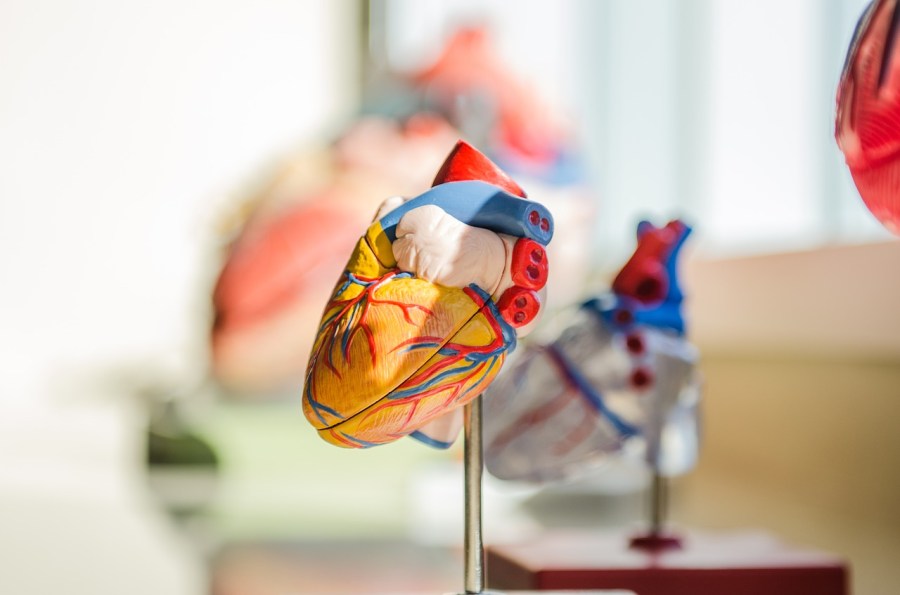What Is the Function of the Apex of the Heart?

The heart is a muscle, and its overall function is to pump blood through the circulatory system of the body consistently. The heart is located toward the back of the sternum and midline to the lungs. There are many parts and functions of the heart, with one of them being the apex.
The apex is the lower tip of the heart and sits above the diaphragm. The apex of the heart points to the left of the body. When the heart beats, this area of the muscle touches the wall of the chest, which is what we can feel if we touch the left side of our chest. This is known as the apex beat.
The apex is made up of the left ventricle. The left ventricle takes the blood that is pumped into it and moves it on to the aortic valve, then on to the aortic arch, and the blood then flows through the rest of the body. This is a continuous cycle.
What Are the Main Parts of the Heart?
There are four main parts to the heart, which are referred to as chambers. These chambers include the left ventricle, the left atrium, the right ventricle, and the right atrium. There are, of course, other parts that make the heart function, which include coronary arteries, nerve tissue, and the pericardium.
The left side of the heart is the larger part and regulates the blood flow to the rest of the body. The right side is the smaller side of the heart and its function is to provide circulation to the lungs.
The Left Ventricle
This chamber of the heart was already explained, but there are a few other facts about the left ventricle. This chamber of the heart plays a factor in our blood pressure. When the pressure is being measured, it uses the fast contractions of the left ventricle. This is the strongest chamber of the heart.
The Left Atrium
Blood flows through the left atrium and then goes on to the left ventricle. The blood that pumps into the left atrium flows in from the lungs and is oxygenated blood.
The Right Ventricle
The right ventricle is in the lower part of the right chamber of the heart. Its main function is to deliver blood, with very low pressure, to the lungs through the pulmonary artery. The deoxygenated blood is sent to the right ventricle from the right atrium.
The Right Atrium
Blood is received into the right atrium from the systemic veins and then is delivered to the right ventricle. The deoxygenated blood that flows to the right atrium comes from the rest of the body.
Coronary Arteries
There are two coronary arteries, one that pumps blood to the left side of the heart and the other to the right side. These arteries stem from the aorta.
Pericardium
The pericardium acts as a protector of the heart. It is a thin sac that envelops the heart and holds it in place. Its protective features don’t stop there. It also lubricates the heart as it beats to guard it against friction with tissue. The pericardium stops the heart from taking in too much blood and secures it from infection that could spread from other organs in the body.





